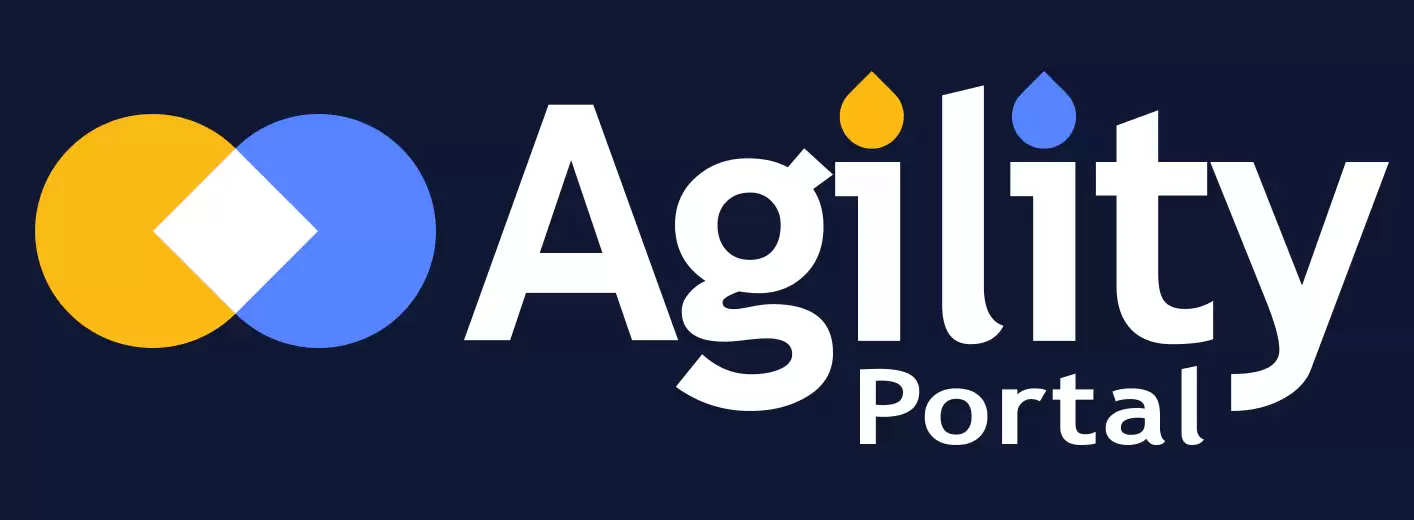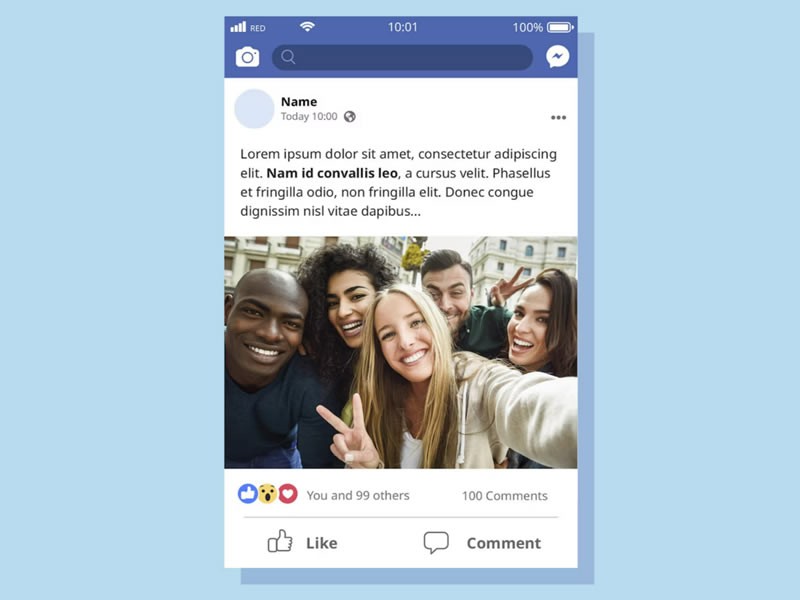Insight Blog
Agility’s perspectives on transforming the employee's experience throughout remote transformation using connected enterprise tools.
14 minutes reading time
(2731 words)
Maximizing The Impact Of Social Media: 12 Strategies For Greater Customer Engagement
Here's a look into why we think social media engagement is so important and how you can overcome roadblocks to develop a successful strategy.
In today's digital age, social media has become an essential tool for businesses to connect with customers and build brand loyalty. With over a billion active social media users worldwide, the potential reach and impact of social media marketing is immense.
However, simply having a social media presence is not enough to truly maximize the impact of social media, businesses need to focus on strategies that drive meaningful customer engagement.
But how can businesses effectively boost customer engagement on social media?
This blog post aims to explore practical strategies to help you maximize the impact of your social media efforts and achieve greater customer engagement.
What Is Customer Engagement?
Customer engagement refers to the process of building and maintaining active, meaningful connections between a brand and its customers across various touchpoints and interactions.
This concept extends beyond mere transactions to encompass the entirety of the customer's experience and interaction with the brand, from the initial awareness stage through to post-purchase support and beyond.
At its core, customer engagement is about encouraging customers to interact with and become more involved in the brand's community and offerings.
This can be achieved with web push notifications, interactive content, social media interactions, customer service excellence, and the creation of compelling, relevant content that resonates with the audience's interests and needs.
How do we define social media engagement?
Social media engagement refers to the level of interaction individuals exhibit with your social media profiles and the content you share. This encompasses a diverse array of actions spanning various social media and social intranet platforms.
For instance, engagement encompasses:
These metrics collectively gauge the effectiveness of your social media presence in captivating and retaining audience interest, fostering community engagement, and amplifying your brand's influence across digital platforms.
- Likes and Favorites: Indications of approval or appreciation shown by users towards your posts or content.
- Comments, Direct Messages, Replies: Direct communication initiated by users in response to your posts, facilitating dialogue and interaction.
- Shares, Retweets, and Reposts: Instances where users redistribute your content to their own networks, extending its reach and influence.
- Saves: The act of users bookmarking or saving your content for future reference or reevaluation.
- Clicks: Actions taken by users to access links or multimedia elements within your posts, indicating active engagement.
- Mentions: Instances where users tag or reference your profile or content in their own posts or comments, potentially sparking further interaction and visibility.
These metrics collectively gauge the effectiveness of your social media presence in captivating and retaining audience interest, fostering community engagement, and amplifying your brand's influence across digital platforms.
Why social media engagement is so important
Why is it crucial to have a social media engagement strategy?
Well, you want your audience to react positively to the content you share. If you're met with silence (which indicates a lack of engagement), it's a red flag. However, robust engagement means more than just boosting your ego.
High engagement rates signal that you're effectively connecting with your audience, whether through regular posts or interactive elements like a social wall. This indicates that people are actively engaging with your content, which benefits both you and the social media platforms.
Platforms like Facebook prioritize content that keeps users engaged for longer periods. When your engagement metrics are strong, the algorithm recognizes your content as valuable, leading to increased visibility. It's a win-win situation where you get more exposure, and the platforms retain users' attention.
Conversely, if your content doesn't resonate with your audience, blaming the algorithm isn't the solution. It's essential to learn from underperforming content and adapt your strategy accordingly.
Understanding your social media engagement metrics allows you to refine your marketing approach to better suit your target audience's preferences, interests, and expectations.
High engagement rates signal that you're effectively connecting with your audience, whether through regular posts or interactive elements like a social wall. This indicates that people are actively engaging with your content, which benefits both you and the social media platforms.
Platforms like Facebook prioritize content that keeps users engaged for longer periods. When your engagement metrics are strong, the algorithm recognizes your content as valuable, leading to increased visibility. It's a win-win situation where you get more exposure, and the platforms retain users' attention.
Conversely, if your content doesn't resonate with your audience, blaming the algorithm isn't the solution. It's essential to learn from underperforming content and adapt your strategy accordingly.
Understanding your social media engagement metrics allows you to refine your marketing approach to better suit your target audience's preferences, interests, and expectations.
Also its important to understand, customers expect prompt engagement, particularly regarding support. With social media being the primary channel for customer care, businesses exchange billions of messages monthly. Meeting customer expectations for timely responses is crucial for maintaining trust and satisfaction.
Strengthening Customer Relationships via Social Media
The Influence of Social Media: In today's digital era, establishing robust customer relationships is paramount for business success. It transcends mere transactional interactions, encompassing the creation of genuine connections with customers.
This authenticity is forged through sincere, transparent, empathetic, and personable engagements.
Recognizing customers as individuals and comprehending their needs, preferences, and sentiments enables businesses to offer tailored solutions that meet their expectations. Central to this genuine connection is the cultivation of trust and rapport, making customers feel valued and respected.
Authentic connections hold significant importance for various reasons. Firstly, they enable businesses to distinguish themselves from competitors, as customers are more likely to gravitate towards companies with whom they feel a personal bond.
Recognizing customers as individuals and comprehending their needs, preferences, and sentiments enables businesses to offer tailored solutions that meet their expectations. Central to this genuine connection is the cultivation of trust and rapport, making customers feel valued and respected.
Authentic connections hold significant importance for various reasons. Firstly, they enable businesses to distinguish themselves from competitors, as customers are more likely to gravitate towards companies with whom they feel a personal bond.
By fostering authentic connections, businesses can cultivate a loyal customer base.
Genuine connections foster client loyalty and advocacy. When customers trust and feel connected to a business, they are inclined to remain loyal and recommend it to others, driving both customer retention and acquisition through positive referrals.
Also, authentic connections enhance customer satisfaction and retention. By prioritizing customer feedback and demonstrating appreciation, businesses can elevate overall customer happiness, fostering long-term relationships.
Genuine connections foster client loyalty and advocacy. When customers trust and feel connected to a business, they are inclined to remain loyal and recommend it to others, driving both customer retention and acquisition through positive referrals.
Also, authentic connections enhance customer satisfaction and retention. By prioritizing customer feedback and demonstrating appreciation, businesses can elevate overall customer happiness, fostering long-term relationships.
Exploring practical strategies for nurturing authentic connections with customers in the digital realm, particularly through social media, presents unique opportunities. For instance, businesses can showcase products like Custom Canvas Photos Prints for Wall Art, inspiring customers with personalized and creative ideas while fostering engagement.
Social media platforms offer businesses the chance to engage with customers, nurture loyalty, and forge enduring relationships. By sharing relatable content and highlighting customizable options, companies can create a deeper connection with their audience and encourage ongoing interaction.
Follow us and access great exclusive content everyday: Follow us on Google News
How to Choose the Right Social Platform for Your Business
Selecting the best social media site for customer engagement involves a thoughtful consideration of several factors:
- Understanding Your Audience: Identify your target audience and their preferred social media platforms. Consider demographics, interests, and online behaviors to align with platforms where your audience is most active.
- Setting Objectives: Define clear objectives for customer engagement, whether it's increasing brand awareness, driving website traffic, generating leads, or fostering community interaction.
- Platform Features: Evaluate the features and functionalities of different social media platforms. Consider factors such as content formats (text, images, videos), engagement tools (likes, comments, shares), and targeting options for ads.
- Analyzing Engagement Metrics: Review engagement metrics from past campaigns or competitor analysis to understand which platforms drive the most interactions, shares, and conversions.
- Competitor Analysis: Study your competitors' social media presence to identify which platforms they are active on and where they have found success in engaging their audience.
- Resource Allocation: Assess your available resources, including time, budget, and personnel, to determine which platforms you can effectively manage and consistently produce engaging content for.
- Trial and Measurement: Experiment with different platforms to see which ones yield the best results for your business objectives. Continuously monitor and analyze performance metrics to refine your strategy over time.
- Feedback and Adaptation: Solicit feedback from your audience to understand their preferences and satisfaction levels with your social media presence. Use this feedback to adapt and optimize your engagement strategy accordingly.
By carefully considering these factors and continuously monitoring performance, you can select the best social media site(s) for customer engagement that aligns with your business goals and resonates with your target audience.
The table below is a guide its recommended to do further research when it comes to selecting the best platform for customer engagement.
| Social Media Platform |
Engagement Level (Out of 10) |
Good for Customer Engagement? |
Reason |
| Instagram |
9 | Yes | Visual content-driven platform; fosters interaction through likes, comments, and direct messages. |
| TikTok | 9 | Yes | Highly interactive platform with short, engaging videos; encourages user-generated content and duets. |
| Twitter | 7 | Yes | Facilitates real-time conversations and discussions; offers opportunities for direct engagement with brands and individuals. |
| Facebook | 6 | Yes | Wide-reaching platform with various engagement features such as likes, comments, shares, and events. |
| 6 | Yes | Professional networking platform; enables connections, discussions, and sharing industry insights. | |
| Pinterest | 6 | Yes | Visual discovery platform; users actively engage with content by saving, sharing, and exploring ideas. |
| YouTube | 7 | Yes | Multimedia platform offering diverse content formats; encourages likes, comments, and subscriptions. |
| Snapchat | 7 | Yes | Emphasizes ephemeral content and real-time communication; encourages direct engagement through snaps and stories. |
| Reddit | 7 | Yes | Community-driven platform with active discussions and sharing of content; fosters engagement through upvotes, comments, and communities. |
| Tumblr | 5 | No | Decreased user base and less emphasis on direct engagement features; primarily used for content curation and sharing. |
Note: The reasons provided are based on general observations and trends for each platform's functionality and user behavior.
Here are 12 Strategies For Greater Customer Engagement
These strategies are critical for businesses aiming to enhance their online presence, build a loyal customer base, and drive sales through social media platforms.
Below are several key strategies worth trying:
You may also like: Best Apps for Employees: UPDATED 2022 – A Complete Guide
1.Developing A Content Calendar
A well-thought-out content calendar is the backbone of effective social media engagement. By maintaining a consistent posting schedule, brands ensure they remain relevant and continuously engage with their audience.
A diverse array of content types—including videos, images, live streams, and written posts—caters to the varied preferences of the audience, keeping the brand's social media feeds lively and interesting.
Generally, planning content allows for strategic alignment with marketing goals, seasonal events, and product launches. This proactive planning ensures that each post is crafted with a customer centric approach, directly contributing to the broader objectives of the brand.
2.Engaging Directly With Your Audience
The essence of social media is its ability to foster direct communication between brands and their audiences. Promptly responding to comments, messages, and mentions shows the audience that the brand values their engagement and is attentive to their needs.
Creating a space where followers feel encouraged to share their experiences and interact with each other enhances the sense of community around a brand.
This direct engagement not only builds trust but also transforms customers into brand advocates.
Free ebook: How To Get Your Intranet Off The Ground
3.Leveraging User-Generated Content (UGC)
User-generated content is a powerful tool for boosting engagement and authenticity. By showcasing customers' stories, photos, and videos, brands can display their products in real-world scenarios, adding credibility and relatability. Embedding a Facebook widget on your website can help highlight this user-generated content directly from your page.
Initiating UGC contests motivates customers to engage creatively with the brand, providing a wealth of authentic content that can be shared across platforms.
This strategy not only amplifies content volume but also strengthens the connection between the brand and its customers, fostering a collaborative community spirit. To further leverage the power of UGC, consider incorporating a live Twitter wall at events. This allows attendees to share their experiences in real-time, using a designated event hashtag.
4.Implementing Social Listening
Social listening allows brands to tap into the broader conversation surrounding their industry, competitors, and themselves. By monitoring mentions and relevant discussions, brands can identify content themes and trends that resonate with their audience.
Engaging in these conversations, even when not directly tagged, presents opportunities to introduce the brand to new audiences and establish thought leadership in the industry.
This proactive approach to engagement helps brands stay ahead of the curve and be responsive to the evolving social media landscape.
5.Personalized Messaging
Segmenting the audience and tailoring messages to specific groups enhances the relevance and impact of social media content.
Personalization can significantly increase engagement rates, as content that directly addresses the audience's interests and needs is more likely to elicit a response.
Occasional direct outreach with personalized messages or offers makes followers feel valued on an individual level, deepening their connection with the brand.
6.Influencer Collaborations
Collaborating with influencers who align with the brand's values and aesthetic can significantly extend its reach and credibility. Authentic partnerships, where influencers genuinely advocate for the brand, resonate more deeply with audiences.
Allowing influencers creative freedom ensures that the content feels genuine to their followers, fostering trust and engagement.
These collaborations can introduce the brand to targeted audiences in a natural and compelling way.
7.Interactive Content
Interactive content, such as polls, quizzes, and live Q&A sessions, invites active participation from the audience, making the engagement experience more dynamic and engaging.
These tools not only entertain but also gather valuable insights about the audience's preferences and opinions.
Live sessions create a sense of immediacy and exclusivity, offering followers a unique opportunity to interact with the brand in real-time, fostering a stronger sense of community and engagement.
8.Exclusive Offers And Behind-the-Scenes Content
Providing exclusive offers and insights to social media followers makes them feel appreciated and part of an exclusive club. Early access to products, special discounts, and insider information incentivizes followers to stay engaged and loyal.
Sharing behind-the-scenes content humanizes the brand, revealing the people and processes behind the products. This transparency builds trust and fosters a deeper emotional connection with the audience.
9.Data-Driven Strategy Adjustments
Continuous analysis of social media analytics is crucial for understanding what works and what doesn't. By regularly reviewing engagement metrics, brands can identify successful content types and adjust their strategies accordingly.
Being adaptable and willing to experiment with new content forms based on data insights ensures that social media strategies remain effective and aligned with audience preferences.
This iterative approach allows brands to continually refine their engagement tactics, keeping content fresh and relevant.
10.Integrating Augmented Reality (AR) and Virtual Reality (VR)
The advent of AR and VR technologies has opened new avenues for customer engagement by offering immersive experiences that captivate the audience's imagination like never before.
For instance, retail brands can significantly benefit from AR by providing virtual try-on features, allowing customers to visualize how products would look in their own space or on themselves without leaving their homes. Similarly, beauty brands are leveraging AR try-on technology to let customers experiment with different shades of lipstick, eyeshadow, or foundation through their smartphones. This enables users to test and compare products virtually, ensuring they find the perfect match for their skin tone and style before making a purchase.
VR takes this immersion to another level, offering virtual events, product launches, or tours that customers can experience from anywhere in the world.
These technologies not only serve to entertain but also deeply engage customers by providing a novel, interactive way to explore what the brand has to offer, thereby enhancing the overall perception of the brand.
11.Utilizing Chatbots And AI For Enhanced Interaction
The use of chatbots on social media platforms revolutionizes customer service by providing immediate responses to queries at any time of day, ensuring that the brand is accessible to its customers 24/7.
This instantaneity enhances customer satisfaction by addressing their needs promptly.
Furthermore, artificial intelligence (AI) can be leveraged to offer personalized recommendations based on the customer's previous interactions, search history, and preferences.
This personalized approach not only makes the customer feel valued but also increases the likelihood of conversions by suggesting products or services that are relevant to the individual, thereby making the shopping experience more intuitive and tailored.
12.Advocating Sustainable And Ethical Practices
In an era where consumers are increasingly conscious of their ecological footprint and the ethical implications of their purchases, brands that openly commit to sustainability and ethical practices are more likely to win their trust and loyalty.
Sharing your brand's journey towards sustainability, be it through ethical sourcing, reducing carbon footprint, or supporting social causes, can resonate with the values of your audience.
Transparency in these efforts, coupled with authentic storytelling about the challenges and milestones, invites customers to be a part of the brand's mission.
Engaging customers in discussions about sustainability not only fosters a sense of community but also positions the brand as a responsible leader in its industry, appealing to a broader segment of value-driven consumers.
Wrapping up
The impact of social media will only continue to grow. By prioritizing customer engagement as a key pillar of your social media marketing strategy, you'll be well-positioned to build lasting connections, stand out from the competition, and achieve long-term success.
Categories
Blog
(2590)
Business Management
(318)
Employee Engagement
(204)
Digital Transformation
(172)
Intranets
(119)
Growth
(118)
Remote Work
(61)
Sales
(48)
Collaboration
(37)
Culture
(29)
Project management
(29)
Customer Experience
(26)
Knowledge Management
(21)
Leadership
(20)
Comparisons
(5)
Ready to learn more? 👍
One platform to optimize, manage and track all of your teams. Your new digital workplace is a click away. 🚀
Free for 14 days, no credit card required.














